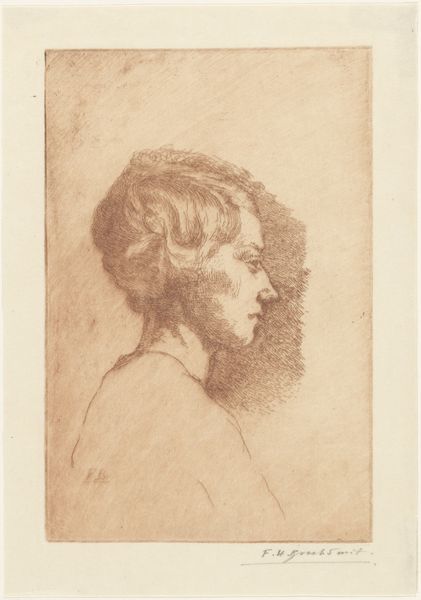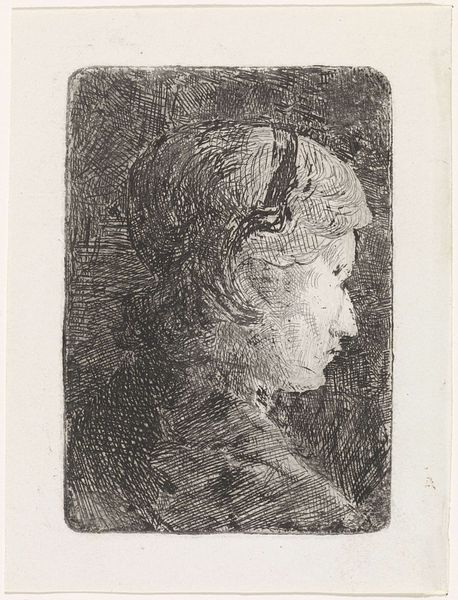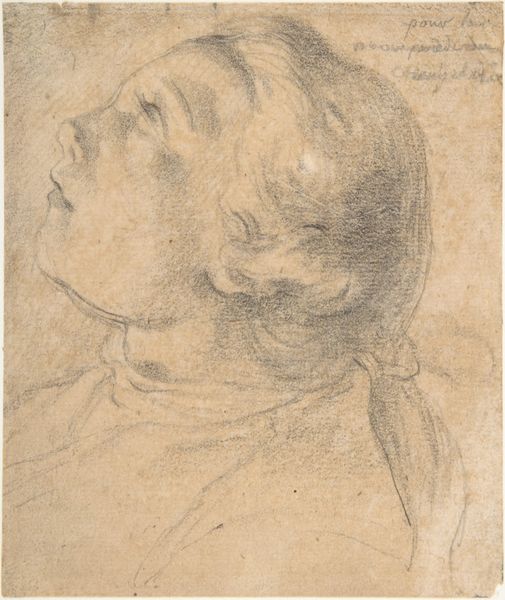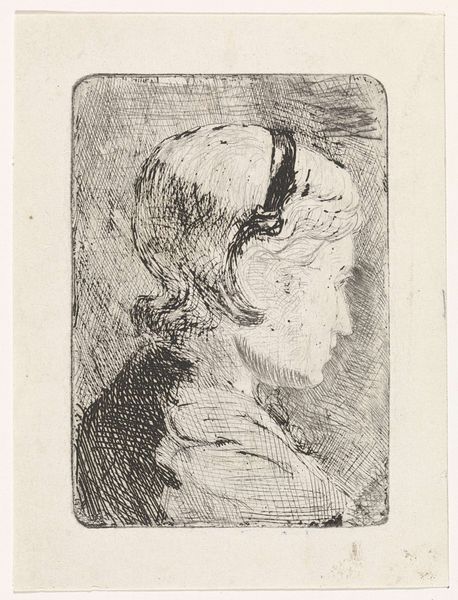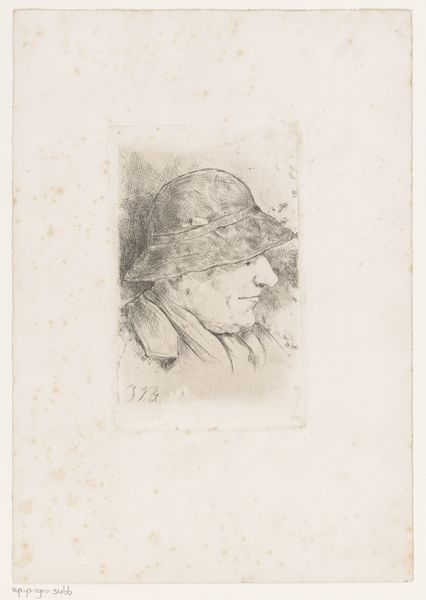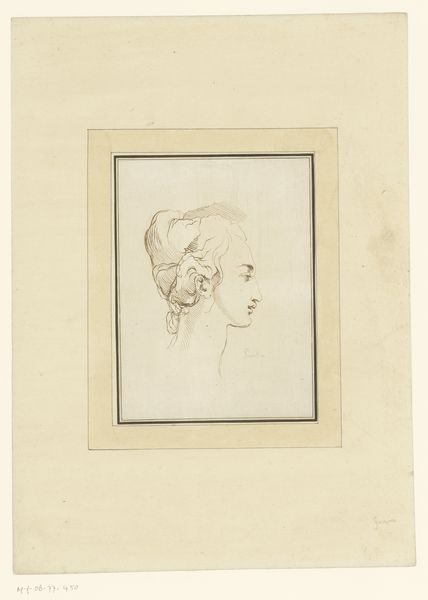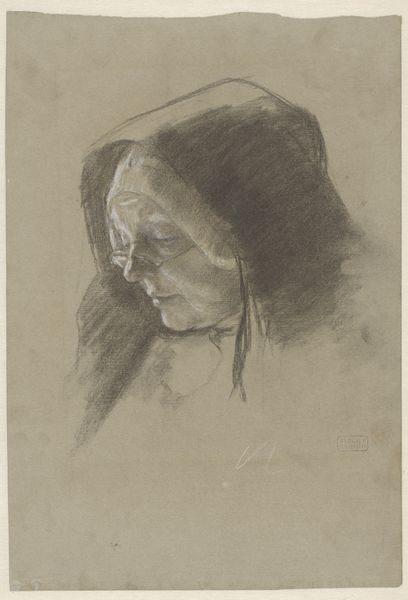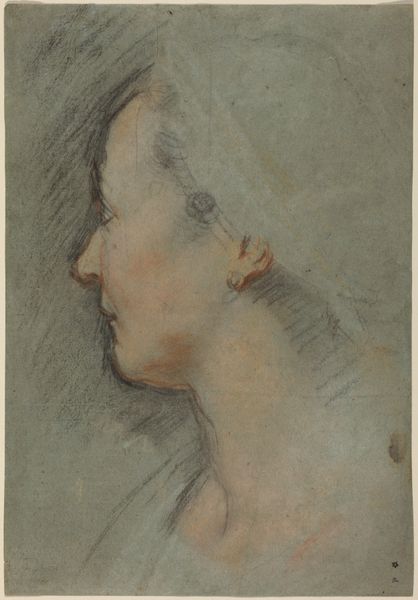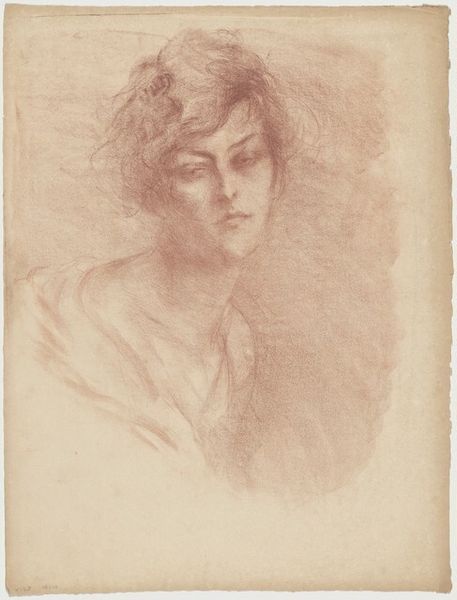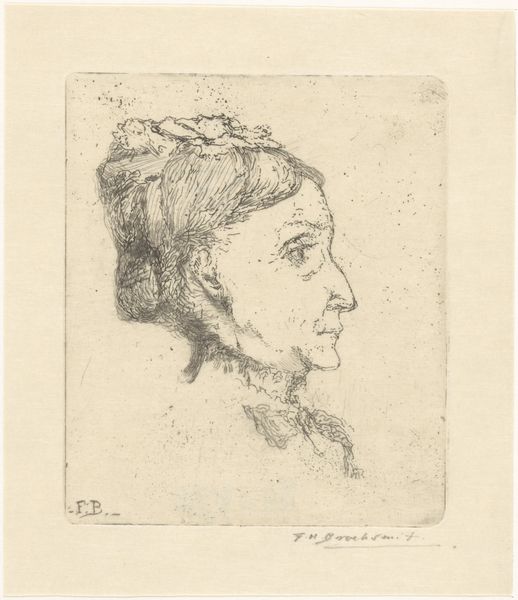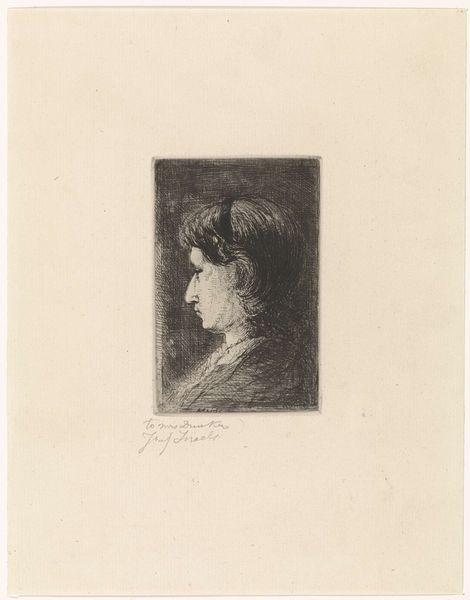
drawing, pencil
#
portrait
#
pencil drawn
#
drawing
#
toned paper
#
light pencil work
#
impressionism
#
pencil sketch
#
old engraving style
#
personal sketchbook
#
pencil drawing
#
pencil
#
sketchbook drawing
#
pencil work
#
sketchbook art
Dimensions: height 170 mm, width 115 mm
Copyright: Rijks Museum: Open Domain
Editor: We’re looking at Jozef Israëls's "Portret van Jan," made with pencil on paper around 1835-1911 and held at the Rijksmuseum. It’s a delicate sketch; the fine lines and subtle shading create a pensive, almost melancholic mood. How would you interpret this work focusing on its artistic structure? Curator: Certainly. Ignoring external references for now, let's examine the formal properties. Note the artist’s use of light and shadow. See how Israëls utilizes varied pencil strokes to define form, especially in the subject’s face. How does the interplay between the density of the lines and the toned paper influence the overall composition? Editor: I notice the hat has the most detail, and the clothing seems almost unfinished. Is that intentional? Curator: Observe how that contrast guides your eye, does it not? It encourages the viewer to fixate on the face and perhaps extrapolate emotion from that focal point. This differential treatment, from detailed to gestural, is a conscious choice in image construction, isn’t it? Editor: Yes, it draws me to consider the facial expression as primary, but that’s a choice that is guided by this visual technique. That makes a lot of sense. Curator: Precisely! By attending closely to the compositional strategies and technical skills at play within the work itself, and how those structural choices influence us as the viewer, we can discover the mechanics that guide our perception. This in turn will hopefully enhance our ability to engage more meaningfully with art in the future. Editor: This exploration really shifts my perception. It’s not just a pretty drawing but a calculated arrangement of light and form, a technical device to evoke emotions, revealing so much about the artist's intention and the viewer's response. Thanks!
Comments
No comments
Be the first to comment and join the conversation on the ultimate creative platform.
